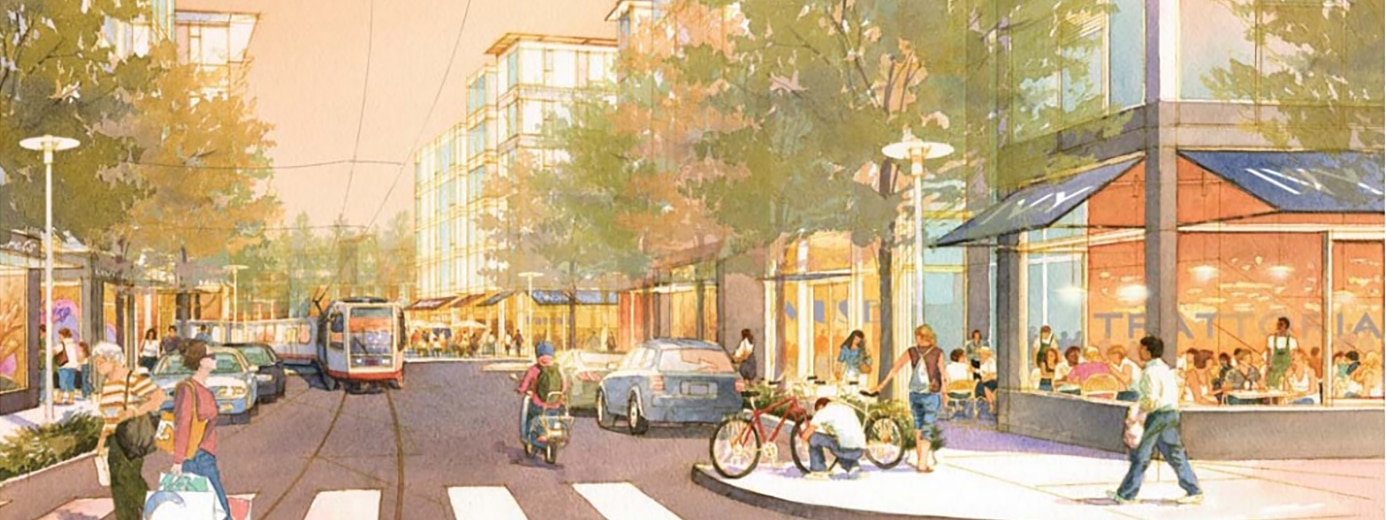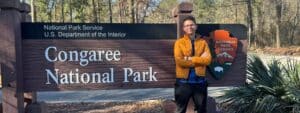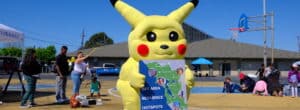At nearly 700 acres, Brisbane Baylands is one of the largest underutilized sites for infill development in the entire Bay Area. A former rail yard and municipal landfill, the City of Brisbane has debated how this land should be used for years.
Greenbelt Alliance is pleased to provide a conditional endorsement of the “Developer Sponsored Plan” (DSP), as described in the 2011 Draft Brisbane Baylands Specific Plan.
The DSP calls for cleaning up the contaminated brownfield site and providing a well-designed walkable, transit-oriented community for residents across the income spectrum with a mix of homes and jobs, ample open space, clean energy, and other amenities. If brought to fruition, the DSP would revitalize the area, support the local economy, relieve development pressure on our region’s open spaces, and offer a host of other environmental and quality of life benefits.
Unfortunately, the city is also considering an alternative that prohibits any new homes in the area, resulting in an inefficient, poorly-planned development pattern that exacerbates our region’s housing shortage and eviscerates the environmental benefits of a transit-oriented mixed-use community.
Our endorsement is conditional upon several issues being adequately addressed:
- Providing sufficient homes.
Providing an appropriate balance of new homes and jobs is essential for creating a thriving community that benefits the city of Brisbane and the surrounding region. The proposed number of new homes—4,434—should be seen as a minimum. The city should consider providing substantially more homes on the site to ensure that the new workforce at the Baylands is able to live close to their jobs and transit, rather than face long commutes on our congested roads to the edge of the region to find a place to live. - Homes we can all afford.
While UPC has agreed to provide 15% of new homes at “below market rate,” there is currently no specification of the levels of affordability that those new homes will provide. Because the housing affordability crisis in the Bay Area is most pressing for those with the least resources, the majority of the below market rate homes must be dedicated to meet the needs of low and very-low income residents. These affordable homes should include a combination of unit sizes, including family-sized units. - Careful phasing of development.
With such a large amount of development, the city should be careful to design a phasing program that balances provision of new homes, commercial/industrial uses, and infrastructure. In particular, the plan should have triggers to ensure that sufficient homes are provided before project-level approval of other development types.
To make the proposal even stronger, we encourage the following to be incorporated as key project features and considered as feasible mitigation measures for the purposes of the FEIR:
- Transportation Demand Management
The Environmental Impact Report (EIR) for the DSP assumes that 80 percent of work trips will occur by automobile and 20 percent by transit, walking, or biking—resulting in an 80/20 “mode split.” The final plan should include a more ambitious mode split target. This is now a common practice for large transit-oriented specific plans. For example, the Concord Naval Weapons Station Area Plan (2012), adjacent to the North Concord BART station, calls for less than 40 percent of all peak-time trips to be made by single-occupant automobiles for all neighborhoods within ½ mile of BART. The mode split target should be accompanied with a commitment to develop a strong Transportation Demand Management program with interim targets, active monitoring and reporting, and penalties for not meeting the plan’s targets. Specific measures should be included to achieve the mode split targets, including community shuttles, car and bike sharing, unbundling the cost of parking from rents, shared parking, and adjustments to parking ratios. - Bay Trail
The DSP proposes to close a 1.5 mile gap in the Bay Trail, with an alignment linking the existing Bay Trail adjacent to the Brisbane Lagoon in the south to the existing Bay Trail adjacent to Candlestick Park in the north. The majority of this route is proposed as a separated pathway for bicyclists and pedestrians. The final plan should include a commitment for a separated pathway along the entire length of the trail. - Water Conservation
The DSP contains many smart features to conserve water. The city should maximize water conservation and recycling opportunities. For example, the city should consider requiring additional conservation activities offsite to reduce the project’s overall net water demand, as suggested in the project’s Water Use Projections Assessment.
Conclusion
The DSP outlines a smart step towards making Brisbane—and the Bay Area—a better place to live. We hope that its approval will inspire communities around the region to redouble their efforts to grow smartly.
Read more about our Endorsement Program and see more Greenbelt Alliance endorsed developments here.



